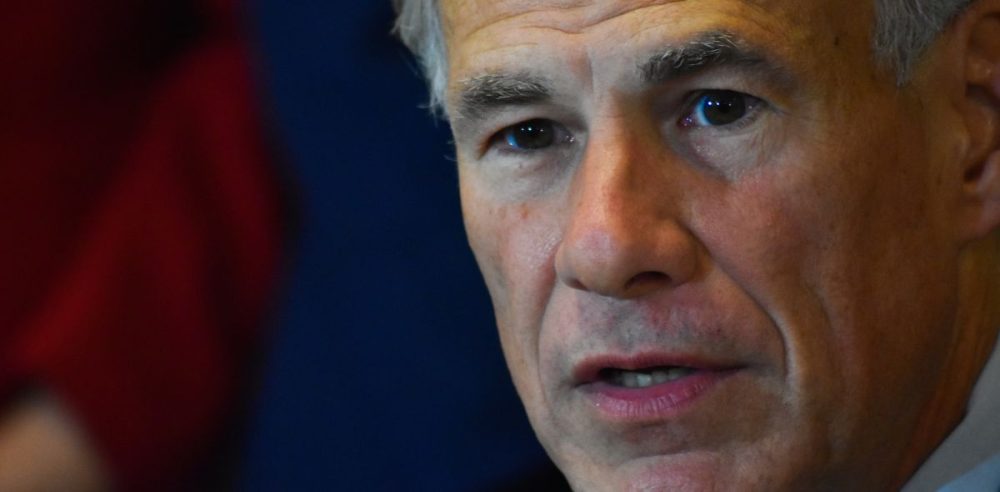Gov. Greg Abbott has not spoken publicly in any detail about a Texas death penalty case that has reignited heated discussion on the subject in recent weeks, apparently preferring to let his legal filing speak for him.
As previously reported in The Dallas Express, convicted murderer Robert Roberson was hours away from his execution on Thursday for a crime that his supporters say never happened when an 11th-hour move by the Texas legislature bought him extra time.
Roberson was accused in 2002 of killing his 2-year-old daughter, Nikki, who doctors said had died from “shaken baby syndrome,” a theory that some critics have labeled as “junk science” in more recent years.
Although the child had been chronically ill and an autopsy showed she had double pneumonia and undiagnosed sepsis, this information was not presented to the jury. She was also given medication that is now considered inappropriate for children because it is known to cause breathing problems.
Brian Wharton, the lead investigator in the case and now one of Roberson’s fiercest supporters, said that the justice system “got it wrong” in this instance. Yet, those making these claims may not have the entire picture.
However, Att. Gen. Ken Paxton is bringing to light shocking details regarding the convicted child murderer in response to efforts by anti-death penalty advocates to save him from the death penalty.
Graphic accounts of repeated physical abuse, including sexual, to his daughter as well as his wife, have been made public. Records have also been released of Roberson changing his story.
In the report released by Paxton, the following was noted, per the Texas Scorecard:
In 2002, two-year-old Nikki Curtis was brought to the hospital close to death with extensive bruising to her chin, face, ears, eyes, shoulder, and mouth. Emergency Room Nurse Andrea Sims, who saw Nikki before medical intervention, testified at trial that, in addition to the bruising, Nikki had a handprint on her face, and that the back of her skull was bruised and “mushy.” Robert Roberson, her father, had a history of violently abusing his daughter, and witnesses testified in trial that they were afraid to leave Nikki alone with him because he would repeatedly “whip” her whenever the baby cried. Testimony showed that he often would strike Nikki “hard” with his hands, a board, or a paddle, and on at least one instance threw her off the bed. Robert Roberson’s own mother said at one time, “One of these days he’s going to kill her and it’s going to be too late for anyone to do anything about it.”
The jury also heard that Roberson, who had over a dozen prior arrests, had strangled his ex-wife with a coat hanger, punched her in the face and broke her nose while she was pregnant, and beat her with a fireplace shovel. The jury also heard that Roberson was the girl’s sole caretaker for the very first time on the day that Nikki’s deadly injuries were inflicted, and he was displeased to be obligated to care for the child, according to his girlfriend at the time.
Since his conviction in 2003, Roberson’s requests for a new trial have been denied at every turn. His last hope appeared to be a plea to Gov. Abbott, who has rarely granted clemency during his time in office. Despite a petition presented to him, signed by 133,000 supporters asking for Roberson’s clemency, Abbott has remained silent.
On October 17, the day set for Roberson’s execution, the Texas House Committee on Criminal Jurisprudence issued a subpoena to have Roberson testify before the committee the following week during a hearing pertaining to the state’s so-called “junk science” law. About two hours before the scheduled execution, a Travis County judge issued a temporary injunction so that Roberson could testify at the hearing.
The state appealed the judge’s ruling to the Texas Court of Criminal Appeals, and the appeals court overturned the Travis County judge’s ruling later that evening. Texas lawmakers then appealed to the state supreme court, which ordered an injunction against the execution at about 10 p.m. on Thursday.
On October 20, Abbott filed an amicus curiae with the Supreme Court of Texas. An amicus curiae, or “friend of the court” brief, is a statement from a third party not directly involved in a case in support of one side or the other on the legal issue at hand.
In the court filing, Abbott claims that the Texas legislature “stepped out of line” by using a subpoena to disrupt a scheduled execution. He said that, according to the state constitution, once the judicial process has been completed and all appeals exhausted, only the governor can grant a reprieve or some other form of clemency.
He called the committee’s actions a violation of the Separation of Powers Clause and urged the court “to dismiss the House Committee’s petition for lack of jurisdiction.”
“Unless the Court rejects that tactic, it can be repeated in every capital case, effectively rewriting the Constitution to reassign a power given only to the Governor,” Abbott’s general counsel wrote in the filing.
Still, Roberson was not allowed to testify at this week’s committee hearings because of a dispute between the state and the legislators over whether he should testify in person or over video conferencing, per The Dallas Express.
On Tuesday’s campaign stop in Dallas, Abbott was asked about the Roberson case.
“We provided an amicus brief to the Supreme Court, and that’s all we have to say,” Abbott told reporters, per NBC 5 DFW.
Roberson has continued to maintain his innocence over the last two decades despite his history of violence, repeated arrests, and altering his story.


